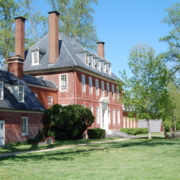HISTORIC GARDEN WEEK 2014: WESTOVER PLANTATION
Welcome to Historic Garden Week 2014, the Garden Club of Virginia’s spectacular week-long celebration of Virginia’s finest homes and gardens. Before immersing yourself in Richmond’s tours Wednesday, Thursday and Friday, treat yourself to a beautiful drive east on historic Route 5 and tour Westover Plantation Tuesday. Westover’s gardens are open daily, but the interior of the grand home is open rarely. This is your chance to see Westover’s gardens and interior.
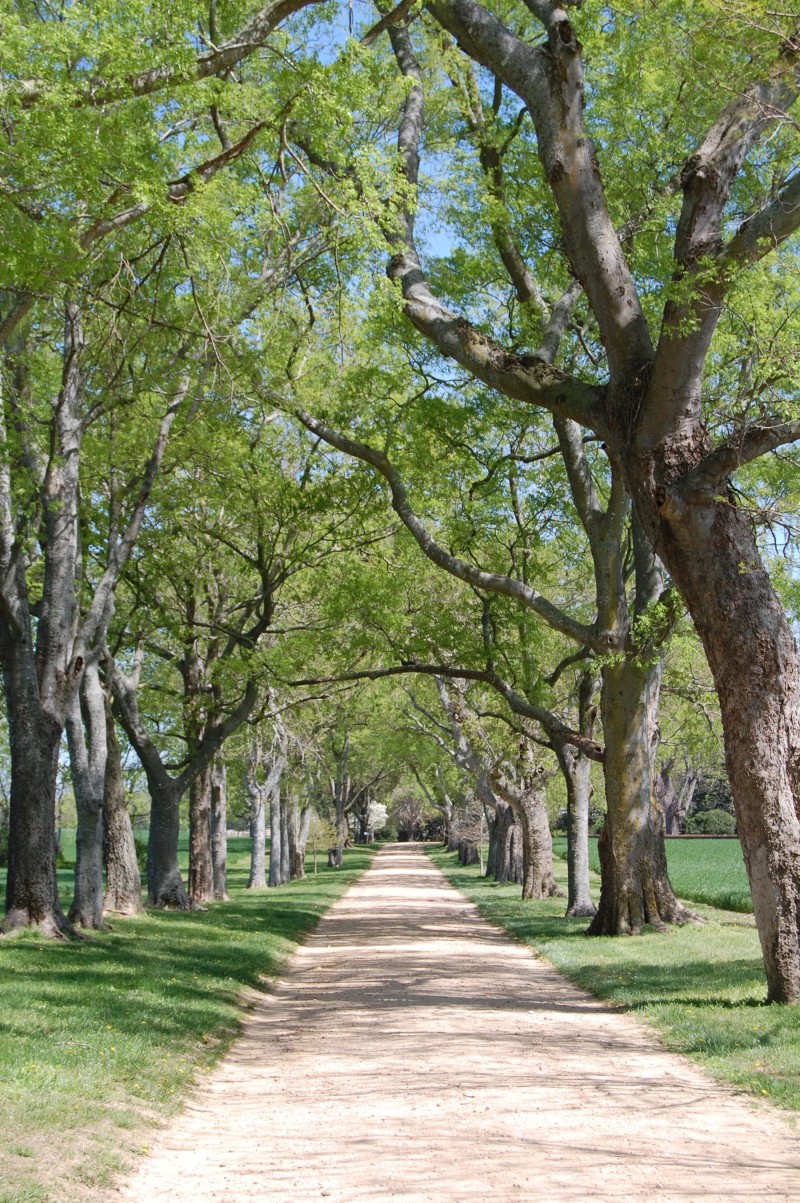
Route 5 is home to several 18th Century plantations, none more spectacular than Westover. At the terminus of an allee of towering Hackberries (Celtis occidentals), perfectly sited along the north bank of the James River, is one of the most noteworthy examples of Georgian architecture in the United States.
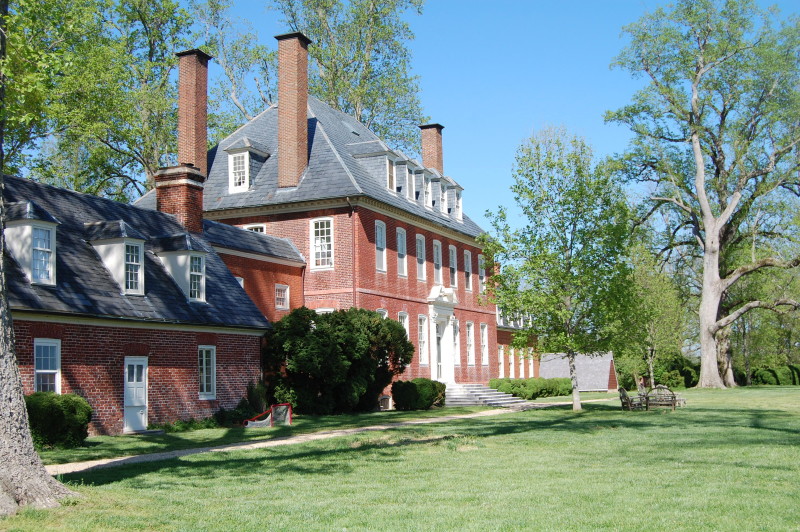
Although William Byrd II (founder of Richmond) has long been believed to have built Westover, recent (dendrochonologic) testing of the attic beams’ tree rings produced evidence that the house may have been built circa 1750, which would make William Byrd III the home’s builder. Westover most likely was named for the West brothers, who were brothers of Lord Delaware, the first colonial governor of Virginia, and leaders of the first English settlements upstream along the James River.
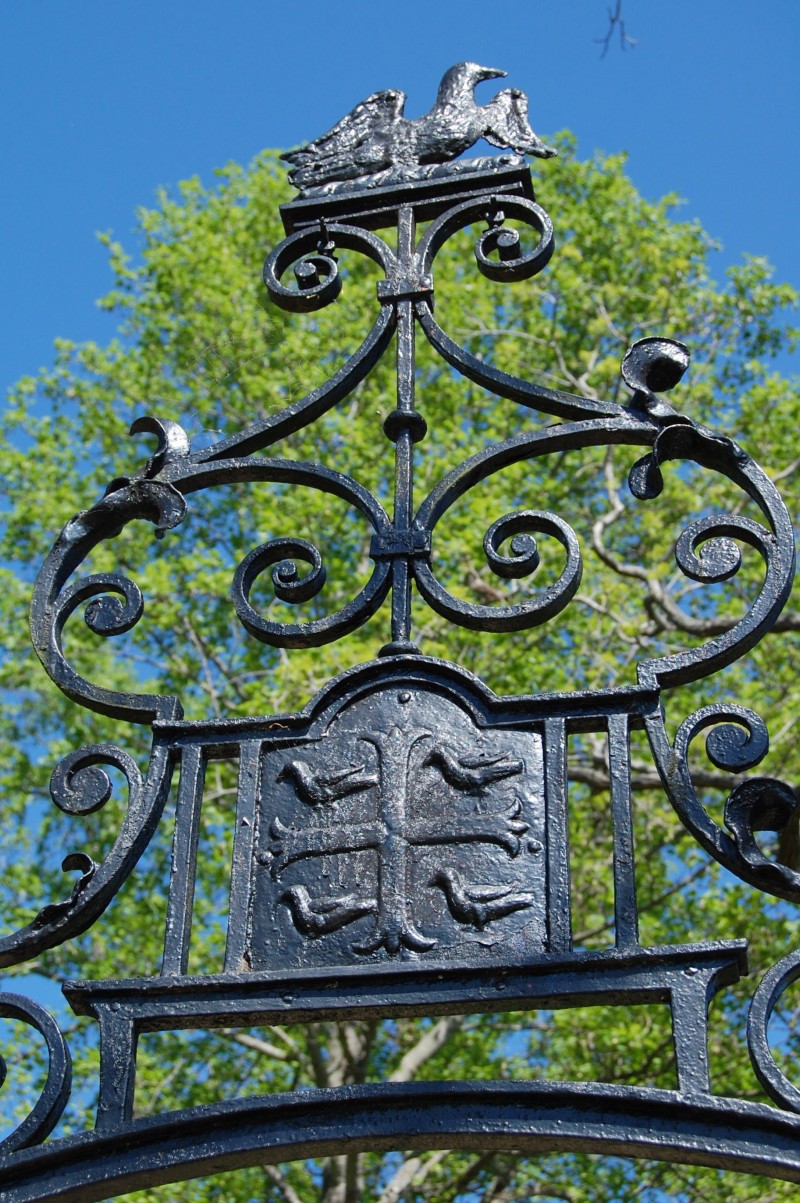
The grounds include three spectacular pairs of 18th Century English wrought iron gates.
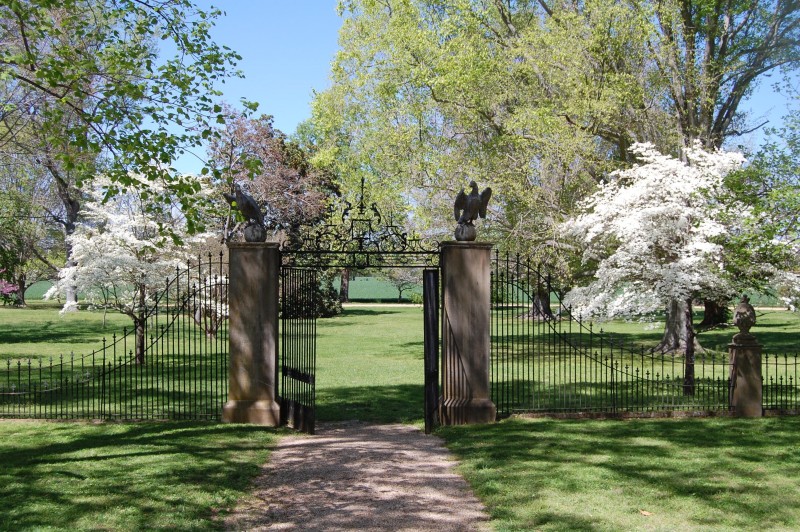
Native Dogwoods (Cornus florida) flank the north iron clairvoyee. An iron clairvoyee (claire – voie), in case you were wondering, is an ironwork gate or grille through which a vista can be enjoyed.
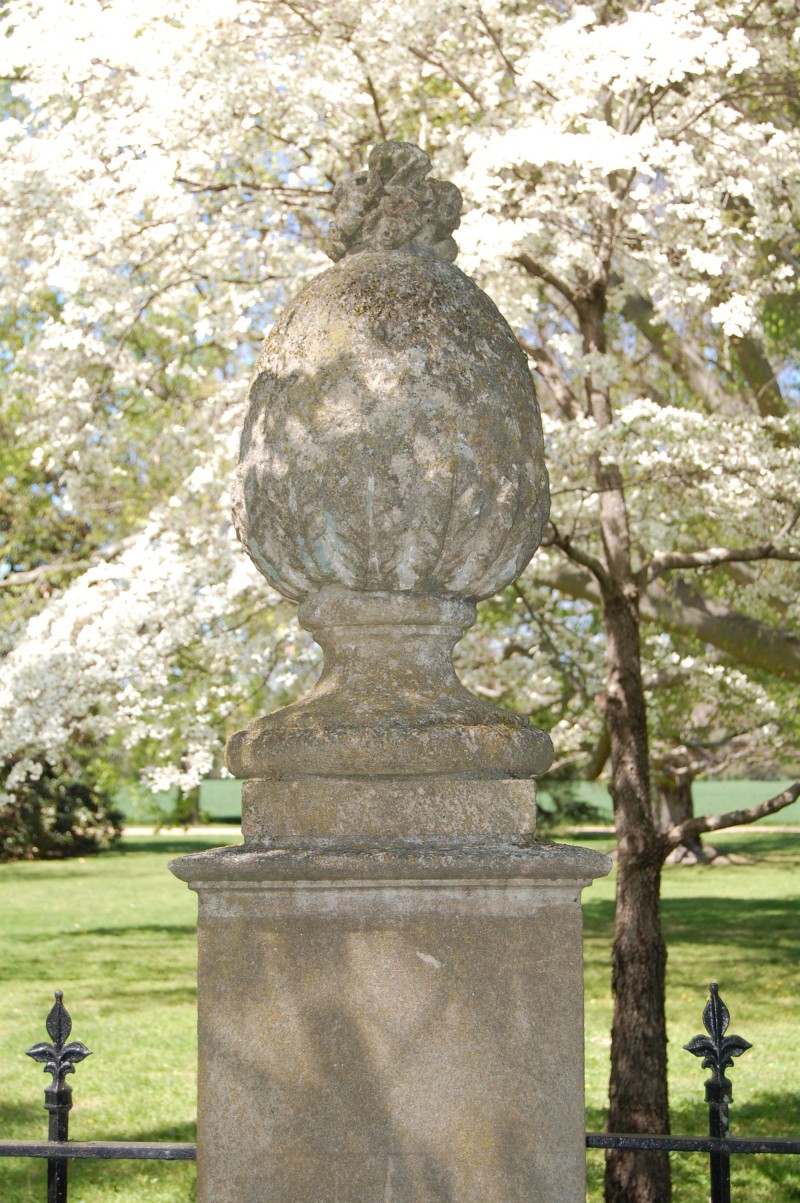
A series of carved stone finials atop the iron clairvoyee’s piers represents the icons of virtue: the acorn, pictured above, for perseverance (from small acorns grow great oaks), the pineapple for hospitality, the Greek key for wisdom, the urn of flowers for beauty, the cornucopia for abundance and the bee hive for industry.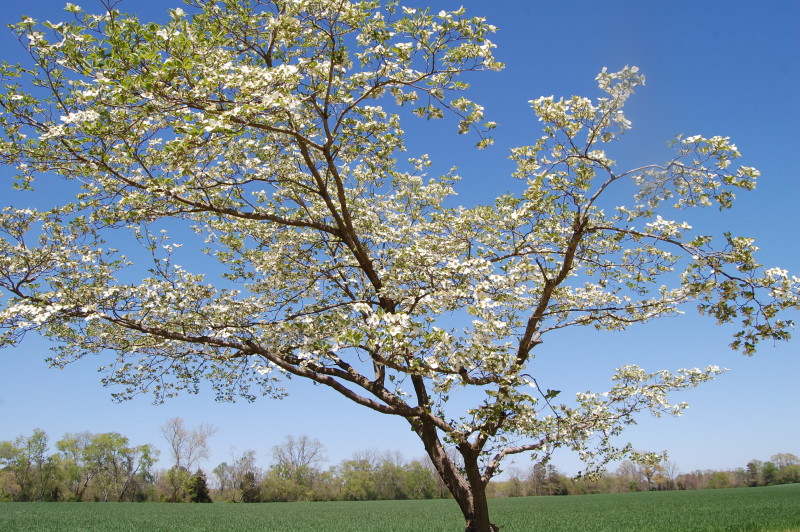
Westover is still a working farm, producing winter wheat, soybeans and corn. Beyond the Dogwood is a field of winter wheat. Although the fields are not irrigated, Westover provides some of the best yields in the Commonwealth.
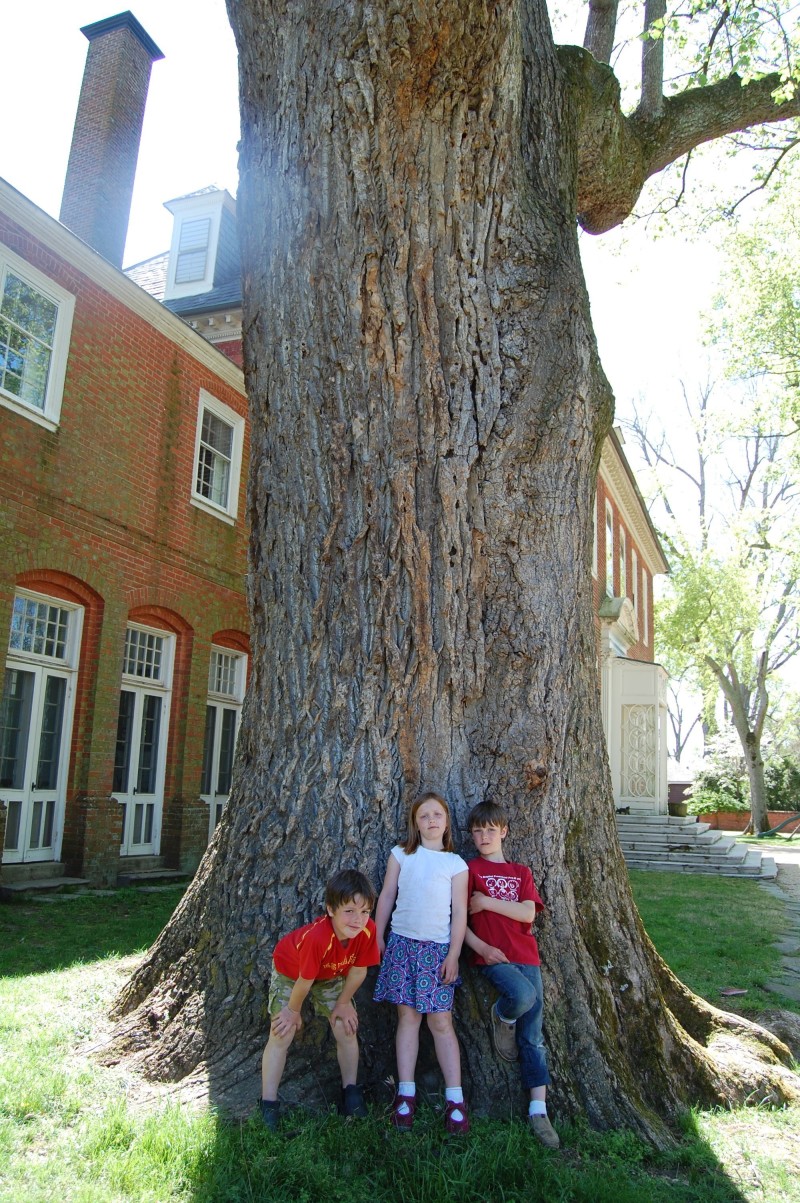
Pictured above are three of the hardest workers on the grounds: Henry, Cornelia and Wills Erda, leaning against one of Westover’s famed Tulip Poplars (Liriodendron tulipifera). On a recent visit, the three were hard at work in the garden.
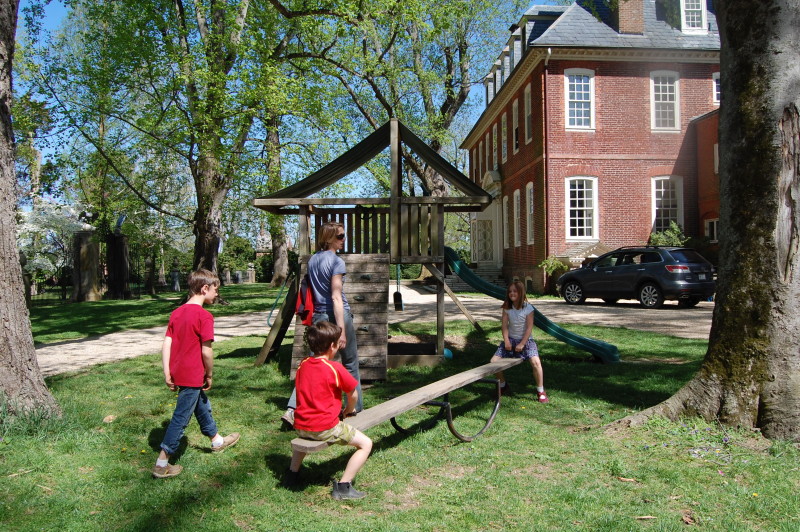
Westover was sold out of the Byrd family after the death of William Byrd III’s widow in 1814. The plantation was brought back into the family by Byrd descendant Clarise Sears Ramsey, in 1899. Mrs. Ramsey modernized the house and established the formal garden’s 8 squares. In 1921, Mr. and Mrs. Richard Crane, the great grandparents of Andrea Erda (pictured above, with her kids Wills, Henry and Cornelia), bought the property.
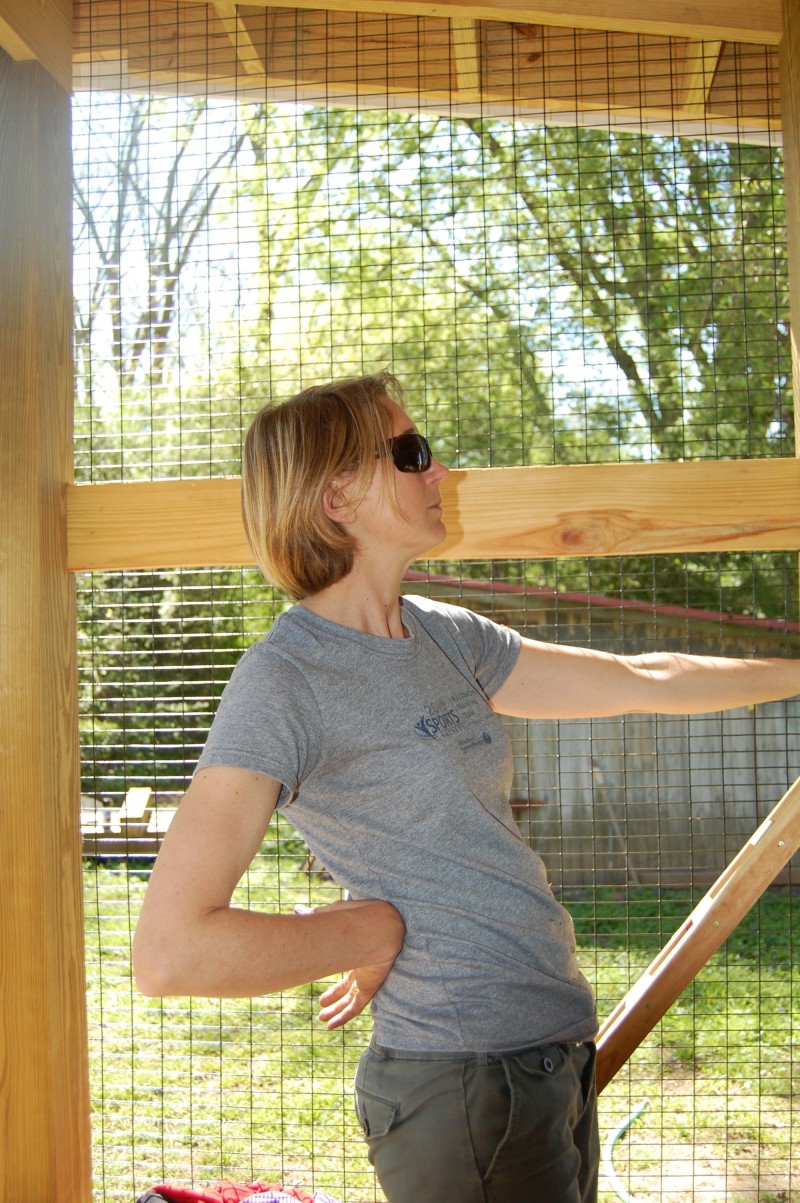
Andrea grew up at Westover with her parents, Muschi and Frederick Fisher, and she and her husband Rob are happily raising their family here as well. Muschi and Andrea are both members of James River Garden Club. In the picture above, Andrea shows off their awesome new double-wide chicken coop.
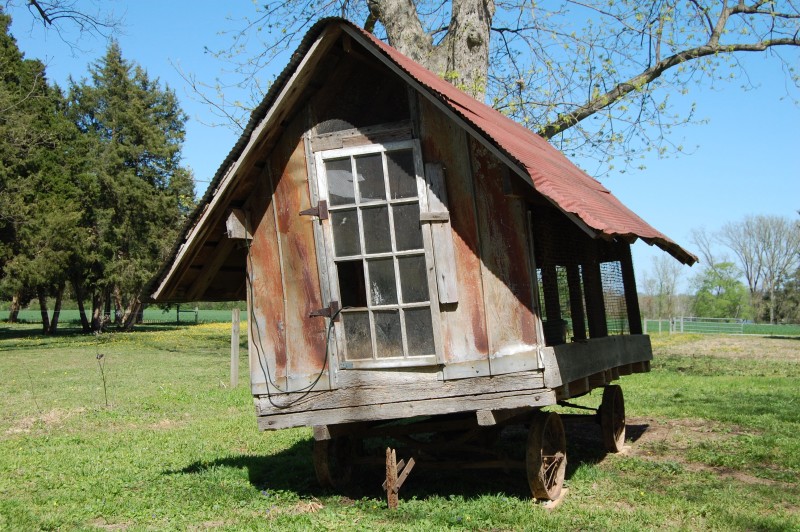
The old one was built on a Ford Model T chassis!
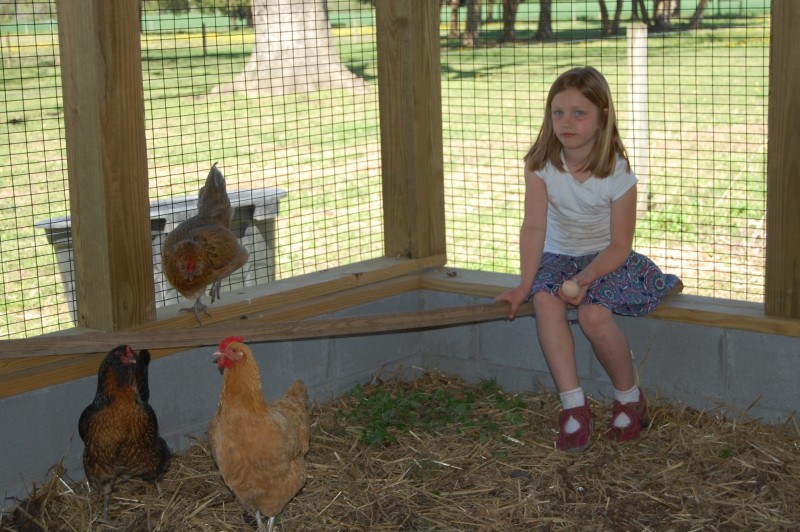
Cornelia and her brothers love tending to the chickens and gathering the eggs.
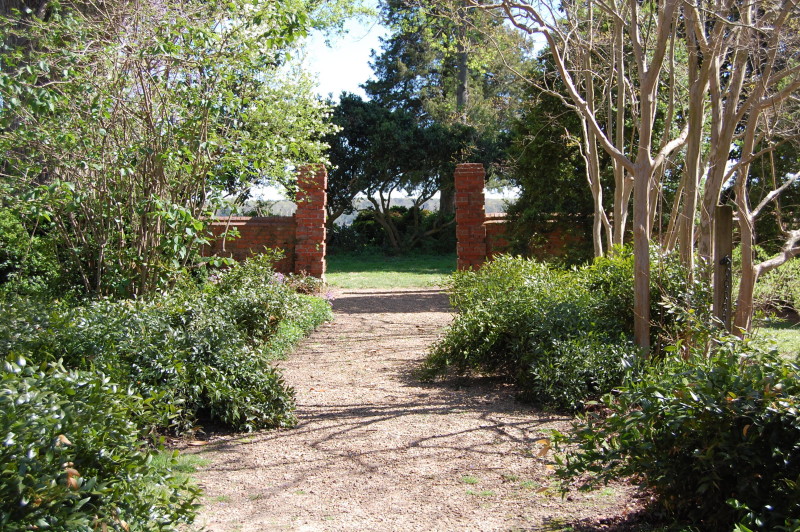
Poet’s Laurel (Danae racemosa) spills over the crushed stone walk in the formal garden. In the distance, beyond the Boxwood, the river beckons.
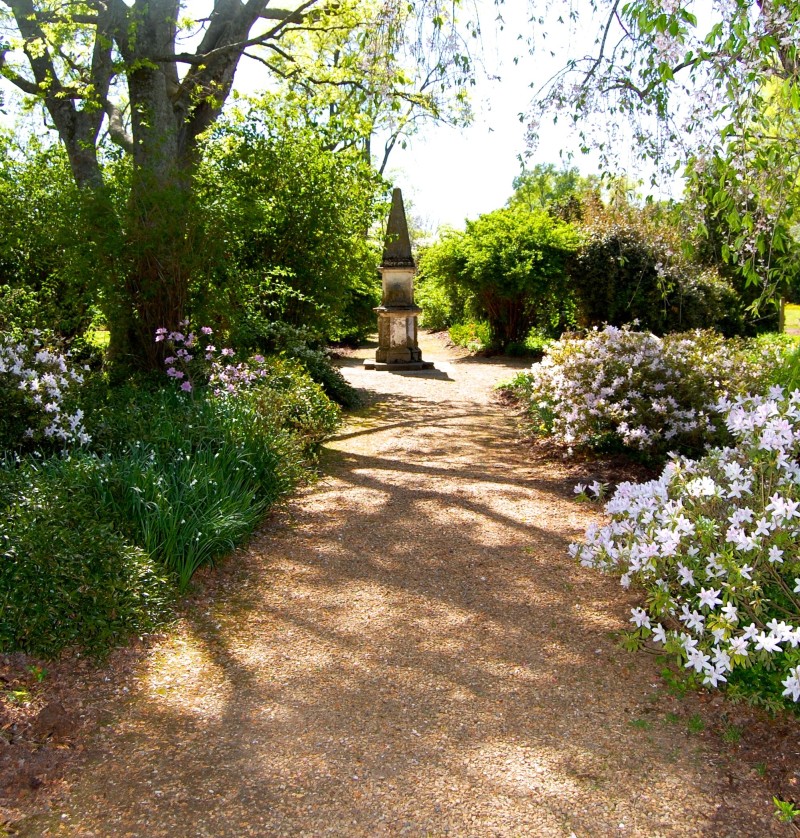
Willaim Byrd II’s tombstone lies on the central axis of the 8 square grid.
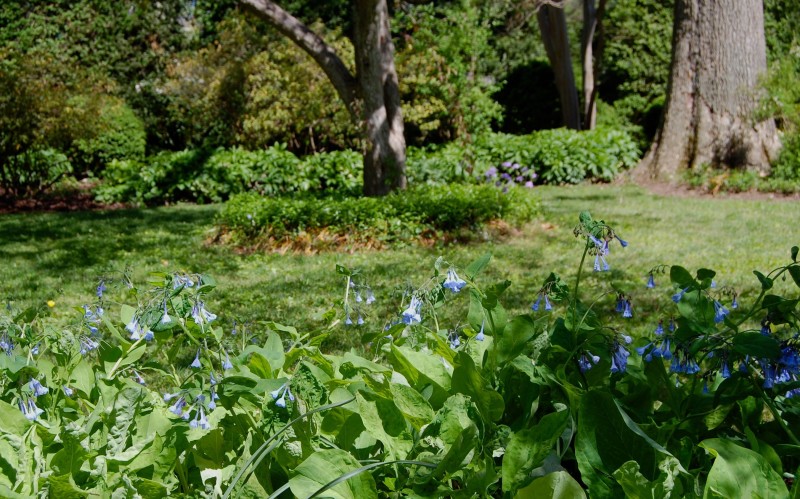
The garden beds are filled with Poet’s Laurel, Azaleas, Dogwoods, Spirea and swaths of the native Virginia Bluebell (Mertensia virginica), above, and the native Columbine (Aquilegia canadensis), below.
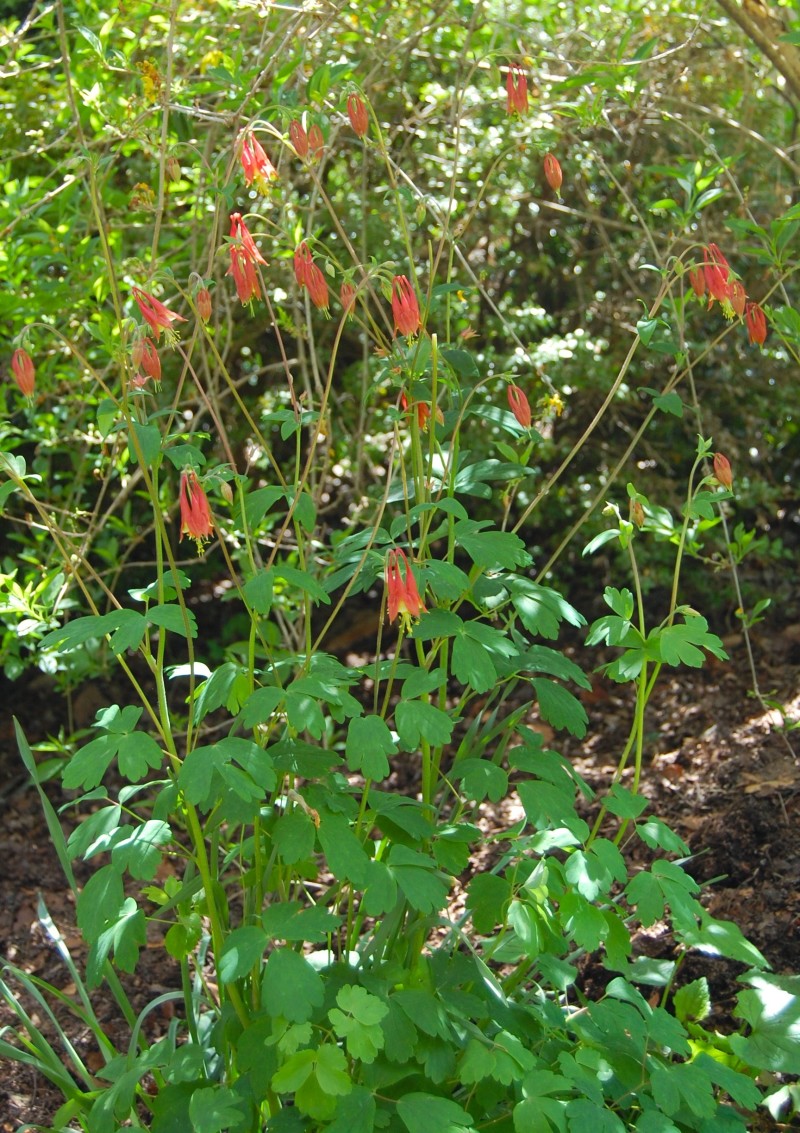
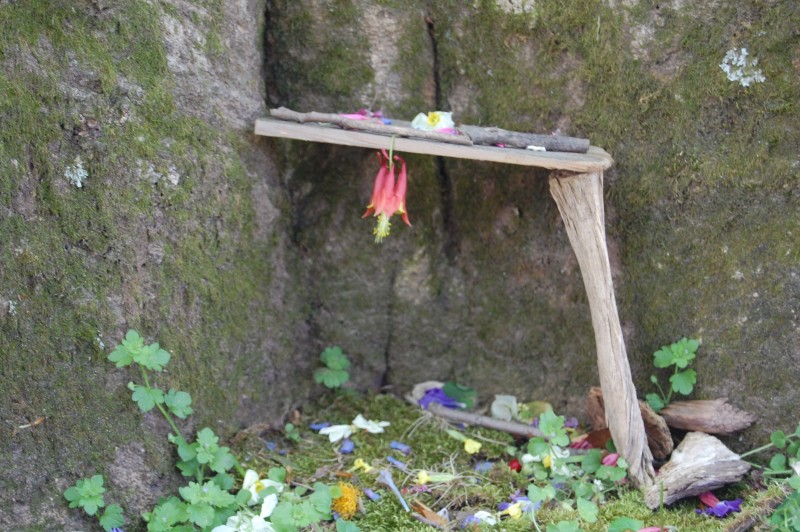
I have to confess that I have not been bitten by the Fairy Garden craze, not really understanding the concept of buying tiny objects to furnish the tiny gardens However, the Erda kids enlightened me on the nature of a true Fairy Garden. Using the ancient Tulip Poplars as their structure, the kids scavenge the plantation’s grounds in search of furnishings. In the picture above, Cornelia brilliantly used a Columbine flower as the fairy garden’s lantern.
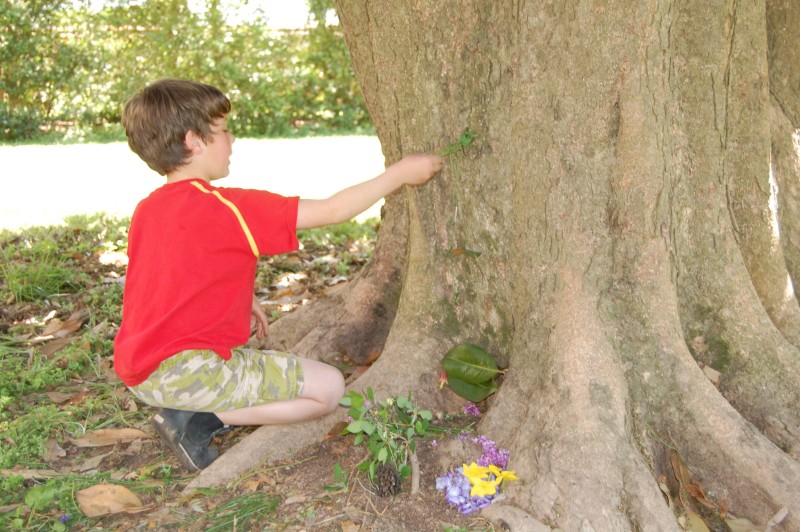
Henry devised a contraption allowing the fairies to climb a ladder up the trunk then parachute to the ground.
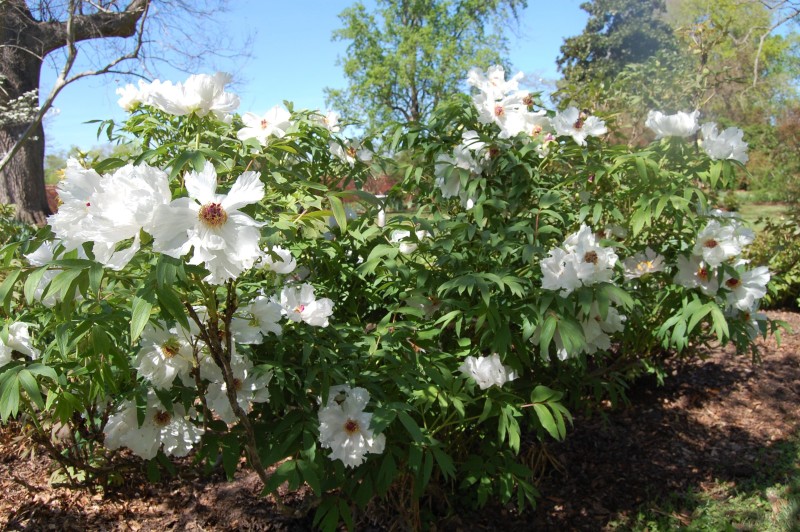
Back in the garden, Tree Peonies (Paeonia suffruticosa) are in full bloom for garden week.
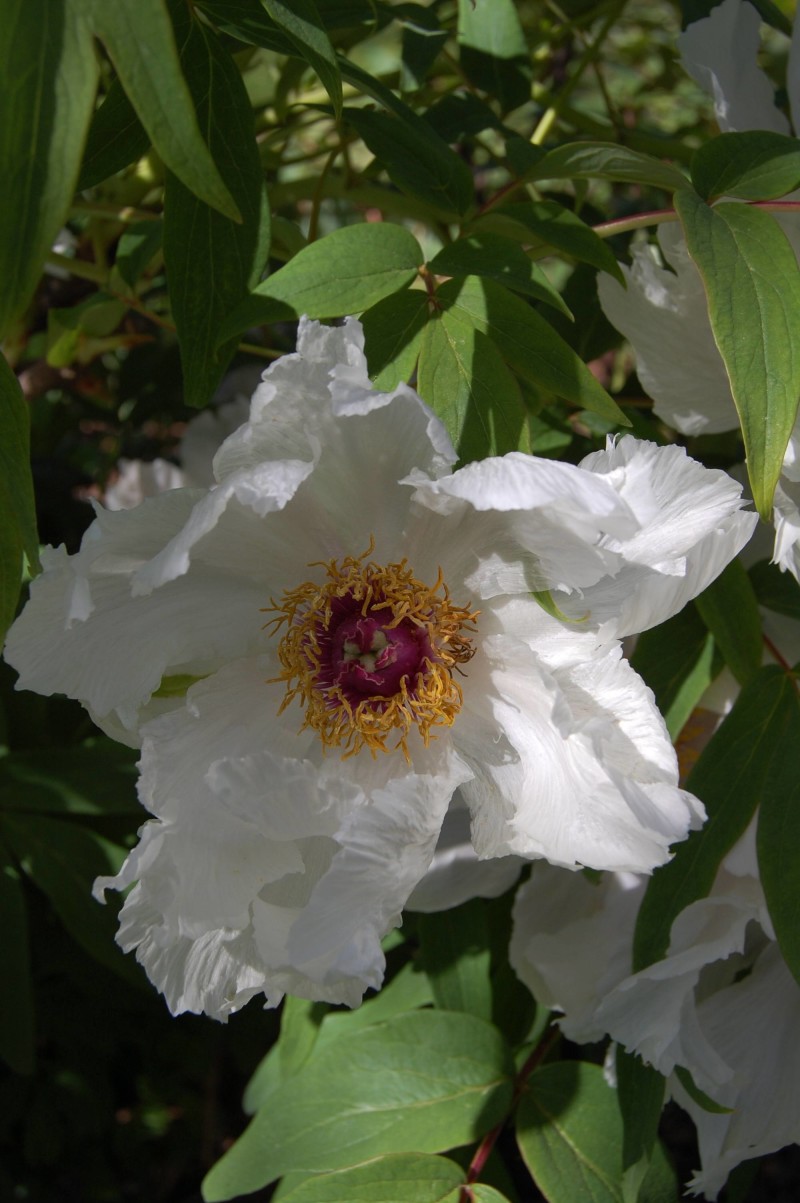
One word of advice to those new to growing Tree Peonies: unlike herbaceous Peonies, do not cut Tree Peonies back to the ground in the fall. They bloom on the old wood, so leave those stalks alone for glorious blooms the following spring.
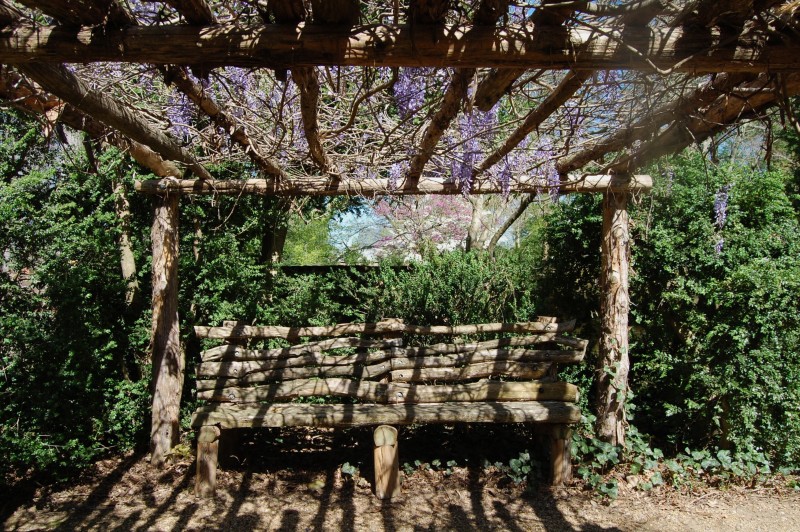
This rustic arbor and seat are draped in Wisteria and throw off some pretty spectacular shadows.
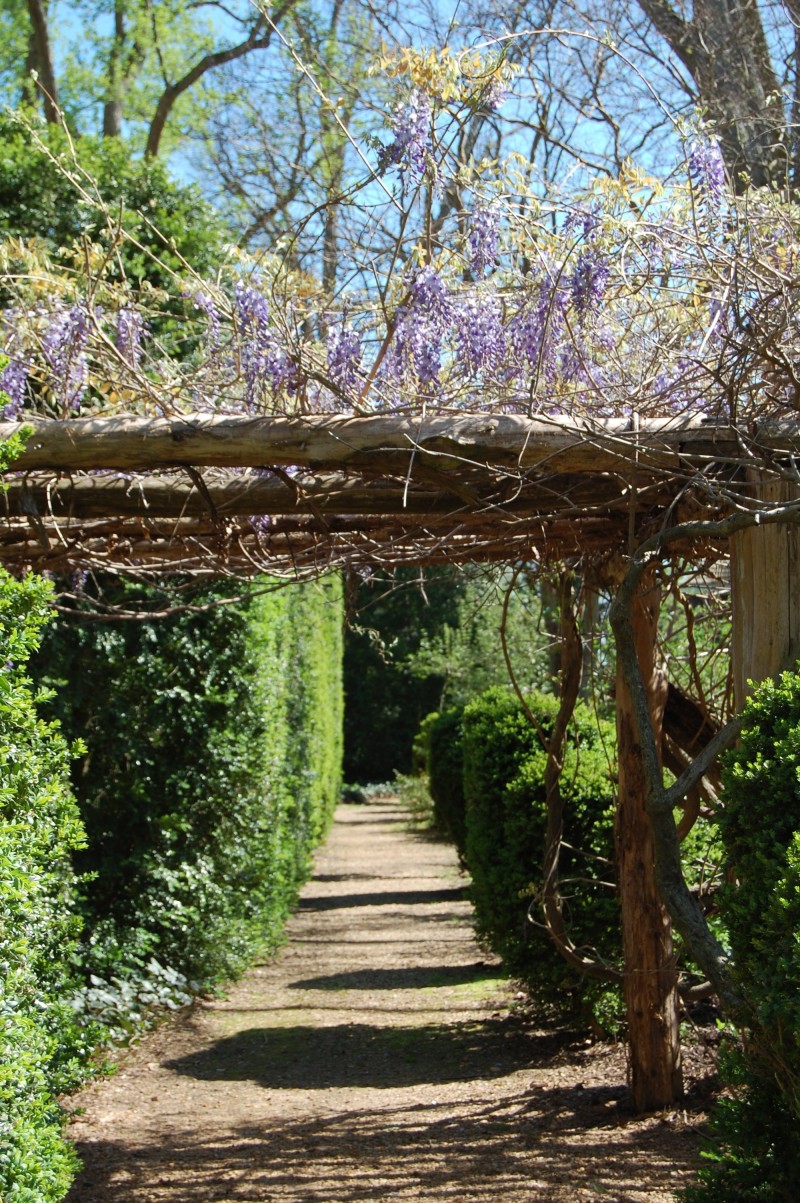
The Wisteria was just beginning to pop when I was at Westover last week. It was preparing to be in full bloom for Garden Week.

Lenten Rose (Helleborus orientalis), if not heavily mulched, will drop their heads in mid to late spring and scatter their seeds, producing lots of baby Lenten Rose. When I was visiting Westover last week, Andrea and the kids were putting down mulch made from composted leaves: a PERFECT medium in which those plants will thrive!!!
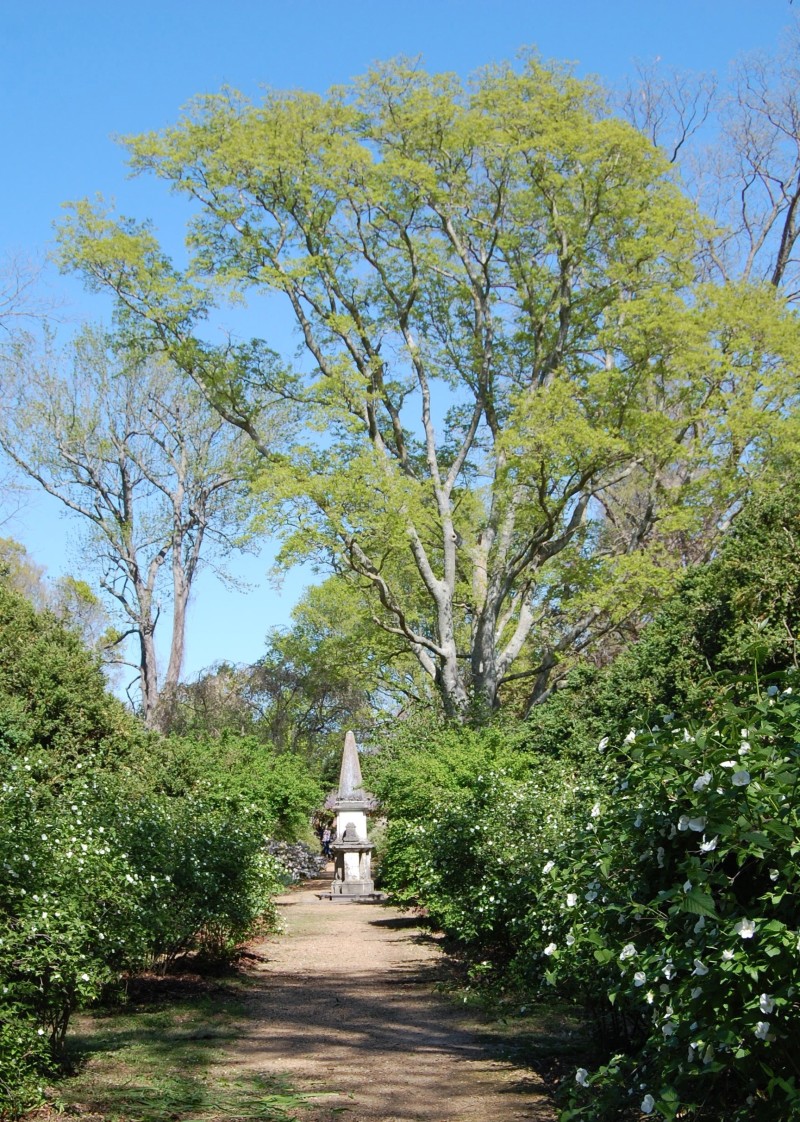
A shrub the Erdas call Jet Berry (not sure of the botanical name) flanks one of the walkways leading to William Byrd II’s tombstone.
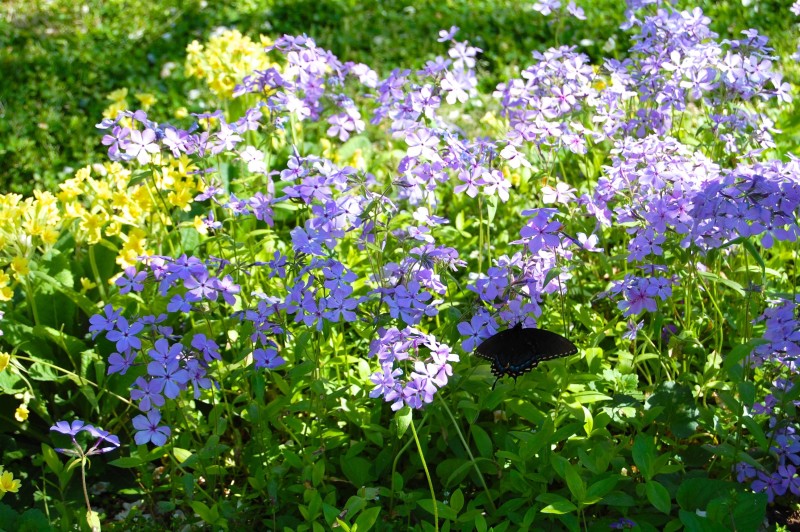
A butterfly hangs out in a stand of Woodland Phlox (Phlox divaricata) and Primroses. The Fishers call these Primroses, an old fashioned variety, “Cow Slips.”
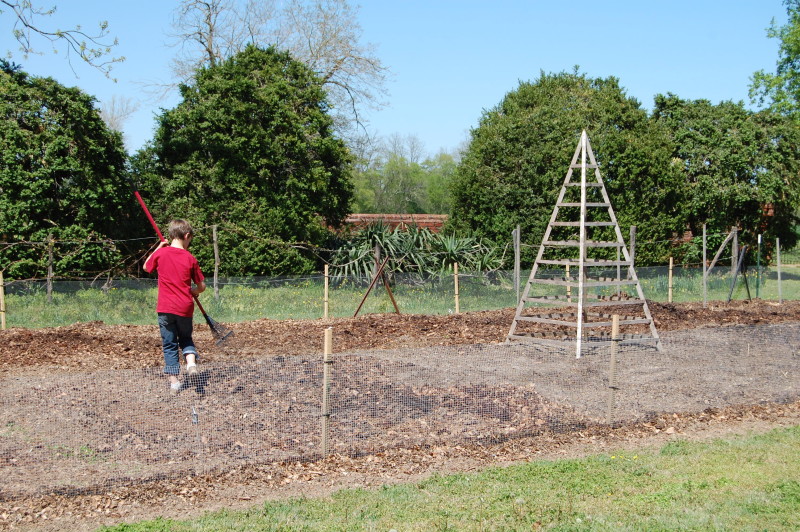
Wills helps prepare the vegetable garden for planting.
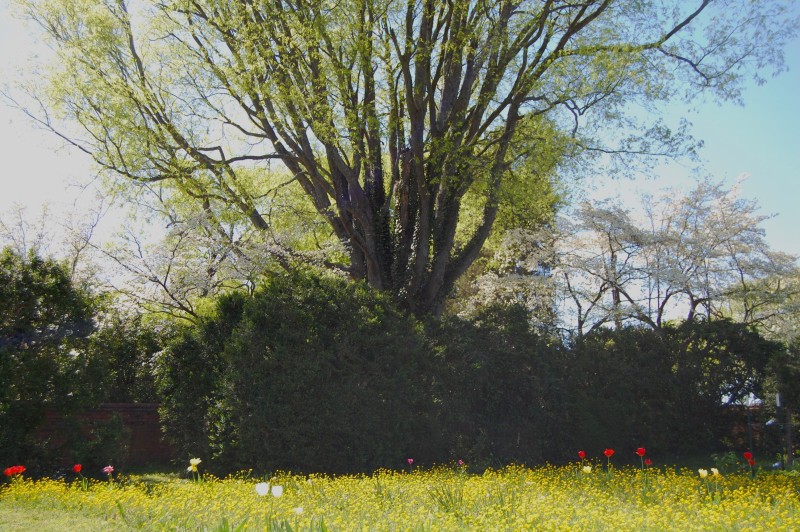
Buttercups and a few remaining tulips cover the ground east of the 8 squares in the formal garden.
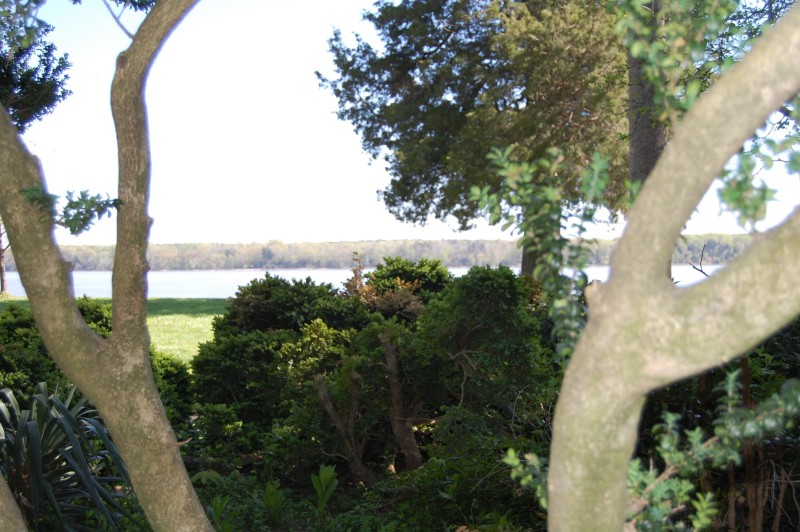
A peak from the formal garden through the Boxwood reveals the James River.
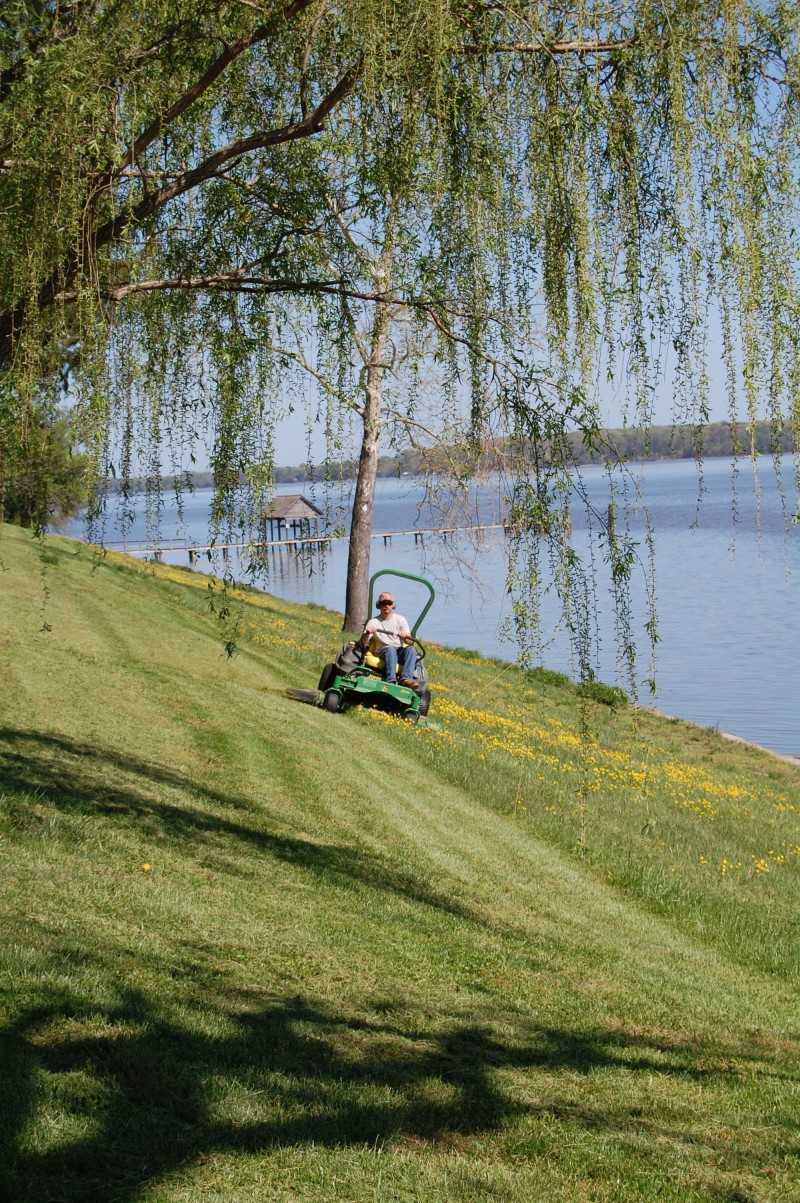
Thaddeus, who helps the Erdas take care of the property, cuts the buttercups growing along the bank of the river.
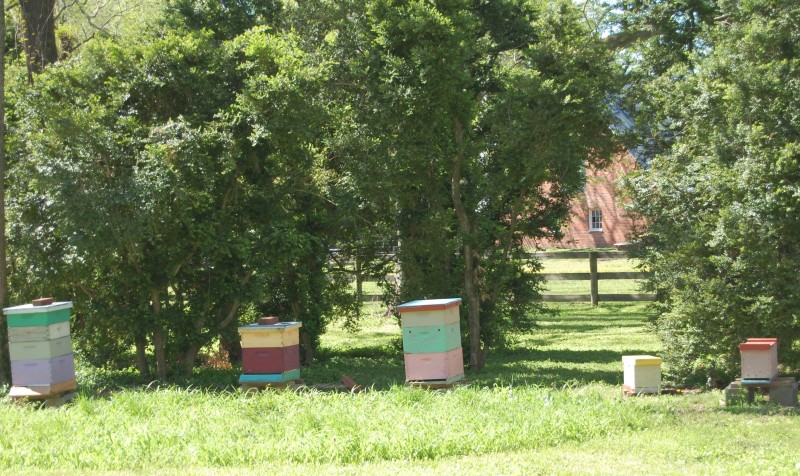
In keeping with one of the six virtues set in stone on the iron clairvoyee, Jones Tyler takes care of five bee hives. One of the hives produces 5 gallons a year — very industrious!
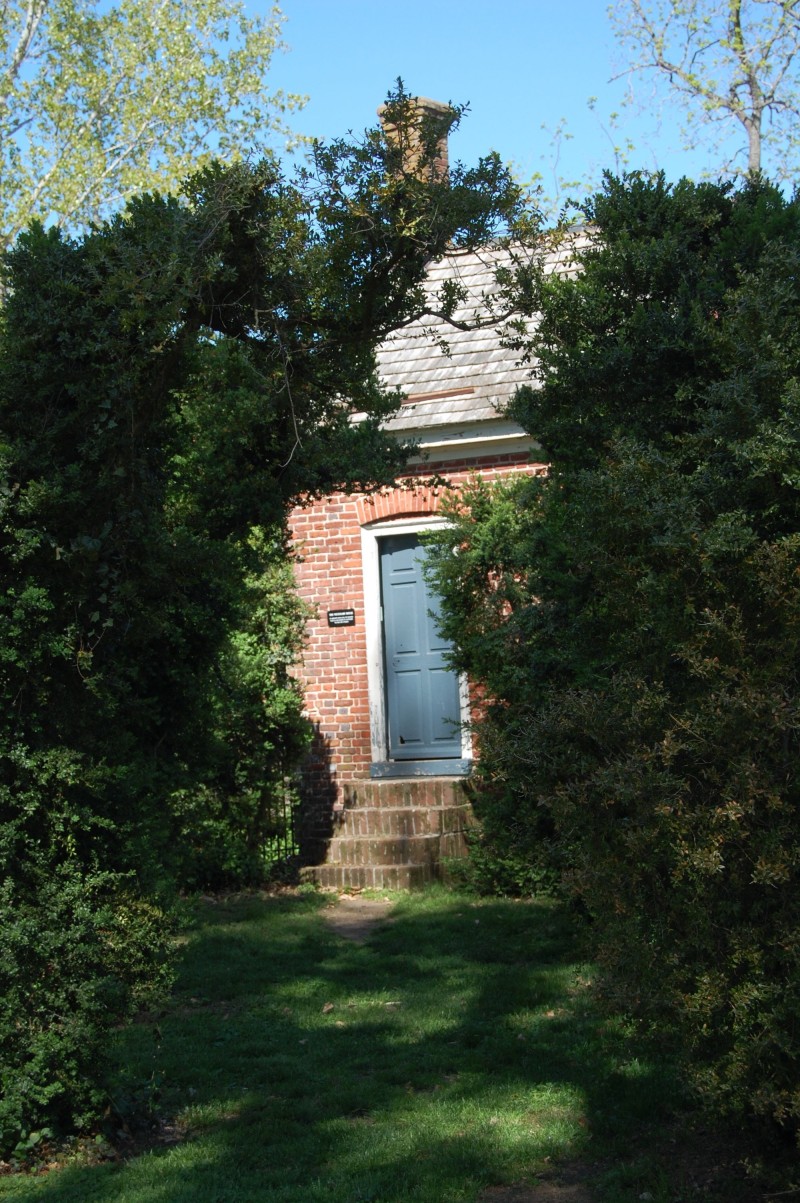
I cannot leave you without a peak at The Necessary House, the cadillac of outhouses with 5 holes and a fireplace. It’s been written up in Privy Magazine!
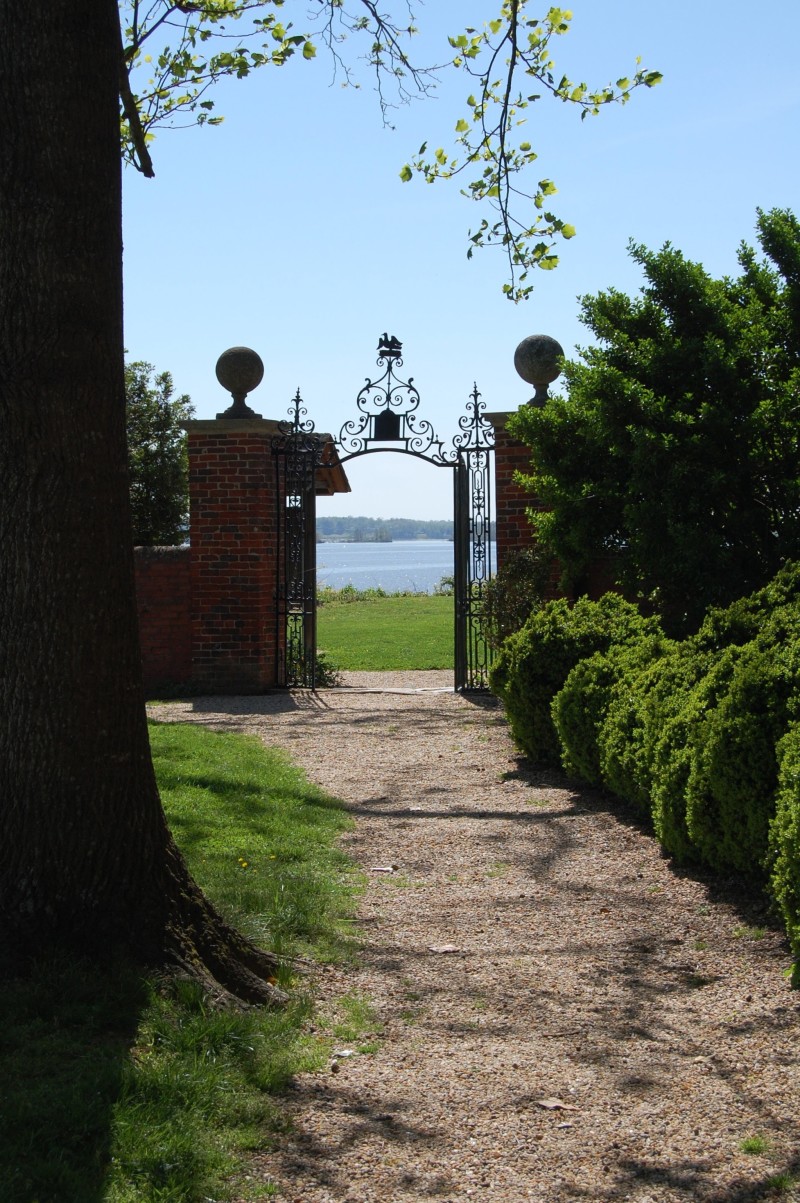
Virginia is fortunate to have the Erdas, and the Fischers before them, as hard working stewards of one of this country’s most significant homes, architecturally and historically. Moreover, they are leaders in efforts to preserve the James, our founding river. As is evident from watching Wills, Cornelia and Henry work hard and play hard on these grounds steeped in historical and ecological lessons, they will pass along their love for this place to the next generation, thus ensuring the preservation of these vital assets for generations to come.
Please take the opportunity to visit Westover this Tuesday, as part of your Garden Week pilgrimage.

